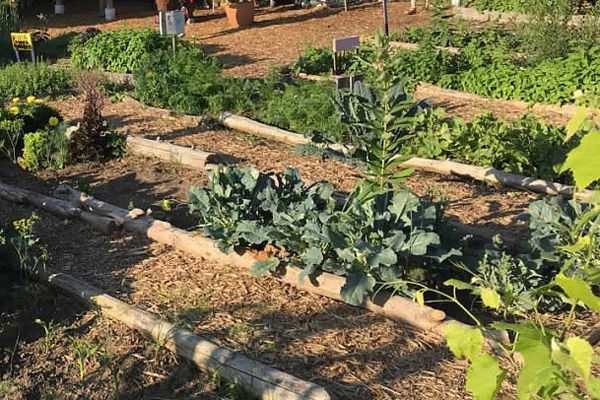The Best Guide To City Blooming
City Blooming Fundamentals Explained
Table of ContentsThe smart Trick of City Blooming That Nobody is DiscussingWhat Does City Blooming Do?All about City BloomingCity Blooming for DummiesCity Blooming Things To Know Before You Buy
Fascinated in expanding food offer for sale in the City of Chicago? Considering starting a community garden? Modifications to the Chicago Zoning Ordinance allow farming uses like community gardens and city farms in numerous components of the city. Below is a checklist of regularly asked questions relating to the rules and laws that farmers need to consider when planning a metropolitan agriculture task.
The zoning modification does not modify any type of various other codes taking care of composting, building licenses, purchasing or leasing City had residential or commercial property, service licenses or ecological contamination. There are existing codes that manage these issues and they stay completely effect and might apply to your task. Neighborhood gardens are generally owned or managed by public entities, public organizations or community-based organizations and preserved by volunteers.
Urban farms expand food that is meant to be offered, either on a not-for-profit or for-profit basis. Because of their industrial function, urban farms call for an organization permit. Yes. A community yard is enabled to offer excess generate that was expanded on website if the sales are accessory or secondary to the yard's primary objective explained over.
The Basic Principles Of City Blooming
Composting is permitted but just for plant product that is generated and made use of on website. The quantity of garden compost material can not go beyond 25 cubic backyards at any type of given time according to the standards in 7-28-715 of the City's Municipal Code. Yes. Because the dirt at many new garden sites needs amending, compost, soil, wood chips, or other materials can be gotten to create or improve the expanding room - urban gardening.

If a building permit is needed after that the hoophouse will be considered an accessory building. You can figure out even more about the structure permit requirements by contacting the Division of Structures. The 25,000-square-foot dimension limit is meant to stop a single community garden from controling a given redirected here block or interfering with the block's existing household or industrial character.
The limitation does not apply to yards located in Public Open Room (POS) areas. Can there be greater than one neighborhood garden that is 25,000 square feet on a solitary block? Yes. The dimension restriction relates to individual yards, not to specific blocks. No. Fence is not required, nonetheless, yards that have big car parking areas might be required to install fencing or other landscaping attributes.
Everything about City Blooming
B1 & B2 areas need that all business usage activities be performed indoors. Is secure fencing required for urban farms? Fences may be called for, along with landscape design and screening, for certain parking locations and exterior work or storage locations depending on location and the specific task taking area.
Yes. Urban farms need structure licenses and zoning approvals prior to building and construction. Various other forms of city evaluation may be needed depending upon certain structures, tasks, size, landscape design, licensing, public health and stormwater administration concerns. A lot of these needs are identified in the task style or permitting procedure, however, the applicant may be liable to independently identify certain licenses or allows that might be called for.
Yes. The kind of permit is figured out by what is occurring at the site. The Division of Organization Matters and Consumer Protection can assist identify the specific kind of company permit that's called for. Yes. Off road car park is needed for the majority of industrial jobs in Chicago. The needed number of parking rooms is based on the variety of staff members working on website and not the square video of the expanding space.
City Blooming for Dummies

Yes. A city farm can sell garden compost product generated on website, nonetheless, the operation has to follow the policies in 7-28-715 of the Chicago Municipal Code. Yes. Aquaponic systems are allowed inside your home on city ranches in several zoning districts. However, a zoning testimonial and structure authorization is required in order to install structures or systems and a service certificate is required as described over.
Up to five hives or swarms of honey might be maintained as an accessory use. However, beekeepers should register with the Illinois Division of Farming. For more details regarding the suggested zoning amendment you might contact the Division of Real Estate and Economic Development, Bureau of Planning and Zoning at 312.744.8563.
Farming in cities and metropolitan locations A metropolitan ranch in Chicago. Urban agriculture refers to numerous techniques of cultivating. https://www.quora.com/profile/Daniel-Nold-6, handling, and distributing food in city areas. The term likewise puts on the area activities of animal husbandry, tank farming, beekeeping, and cultivation in a city context. Urban farming is distinguished from peri-urban agriculture, which takes place in rural areas at the side of residential areas.
The Only Guide to City Blooming
, who look for to develop social networks started on a shared principles of nature and area holism. These networks can create by way of official institutional assistance, ending up being incorporated right into local community preparation as a "shift town" movement for lasting urban growth.
Some of the first evidence of urban agriculture comes from Mesopotamia.